by Amineddoleh & Associates LLC | Jun 27, 2023 |
We are thrilled to announce the newest publication from associate Maria T. Cannon. Her latest article, “The Need for Speed: Why Recovery of Missing Art Needs an Upgrade,” was published in the ABA’s Art & Cultural Heritage Law Newsletter, Spring 2023 Edition.
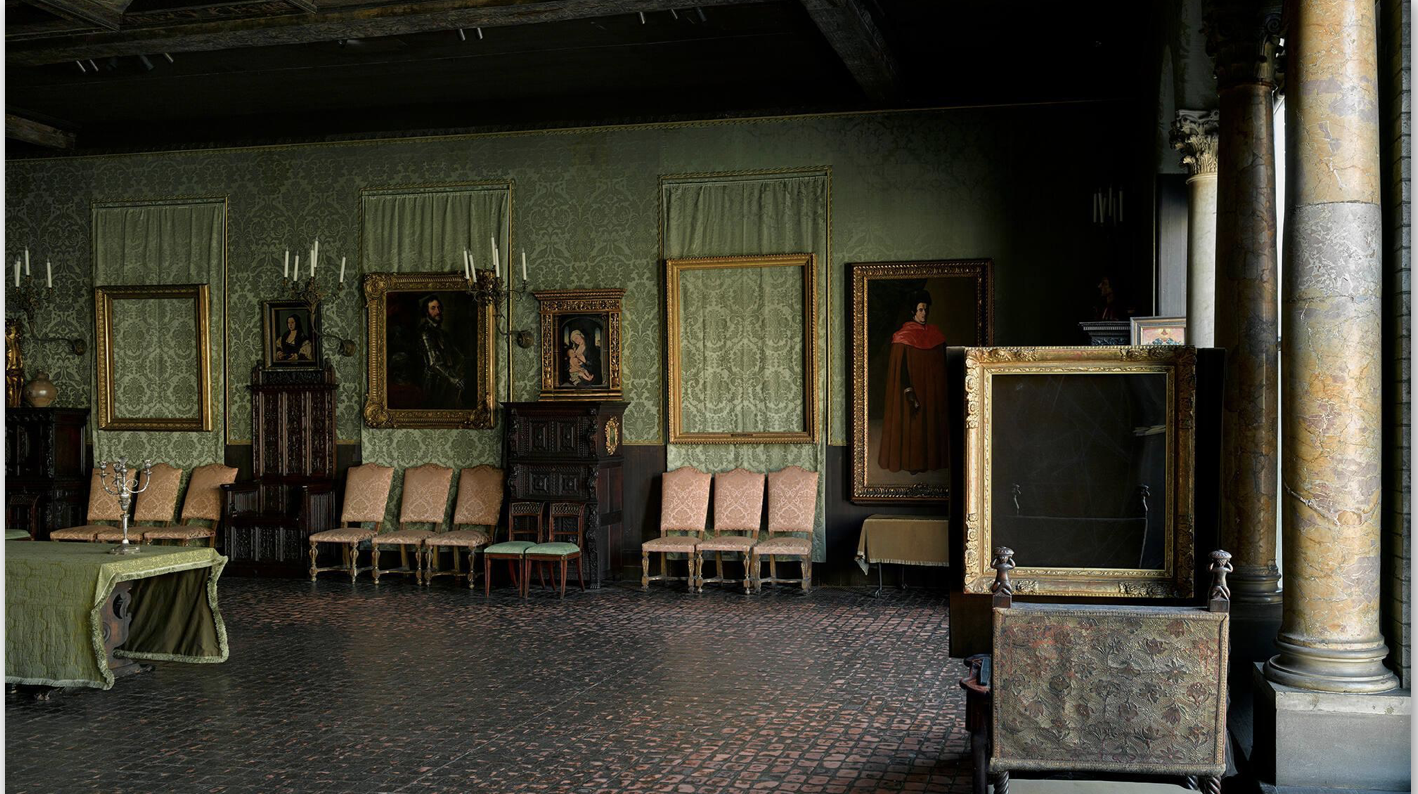
The Dutch Room with empty frame at the Isabella Stewart Gardner Museum, site of the most notorious art theft in modern history (2016). Image via
Isabella Stewart Gardner Museum, Boston. Photo Credit: Sean Dungan.
The piece discusses a new take on art crime and looting. She highlights how recovering artwork is a race against time. Art, once stolen, is uniquely difficult to find. Moreover, because stolen art is often delicate, it is subject to physical deterioration. Legal channels to recover artwork often slow down the process. Another issue can come from law enforcement. To recover major stolen works of art, the U.S. often relies on FBI agencies that lack crucial insider knowledge of local crime organizations. She acknowledges these difficulties, an offers creative solutions.
Want to read Maria’s article? Contact the ABA Art & Cultural Heritage Law Committee for a full copy of this season’s great newsletter.
by Amineddoleh & Associates LLC | Dec 14, 2022 |
In this annual newsletter, Amineddoleh & Associates is pleased to share some major developments that took place at the firm and in the art world during 2022.
LITIGATION AND SETTLEMENT UPDATES
The “Goodwill” Marble Bust

The Marble Bust looted during WWII that was found in Texas and will be returned to Germany
Possibly the most talked about art law matter of the year was the return of an ancient marble bust to Germany. The 2,000-year-old artifact likely originated from Rome, but it was acquired by Bavarian King Ludwig I and then placed in a German museum from where it was looted during World War II. Our client, Laura Young, bought it at a local goodwill shop and ultimately returned it to Germany. It was an honor to advise her and work with her to negotiate the internationally celebrated return.
Copyright Infringement Lawsuit
At the start of the year, we filed a litigation in Iowa on behalf of a muralist, Chris Williams. His work was featured in an advertisement that aired during the Super Bowl. We are currently representing him in a lawsuit for copyright and a violation of his moral rights on the Visual Artists Rights Act.
ART & IP NEWS
One of our favorite things about the art market is that there is always something exciting happening in the art world. Some of our most popular blog posts from this year are found below.
Celebrities and Fossil Collecting
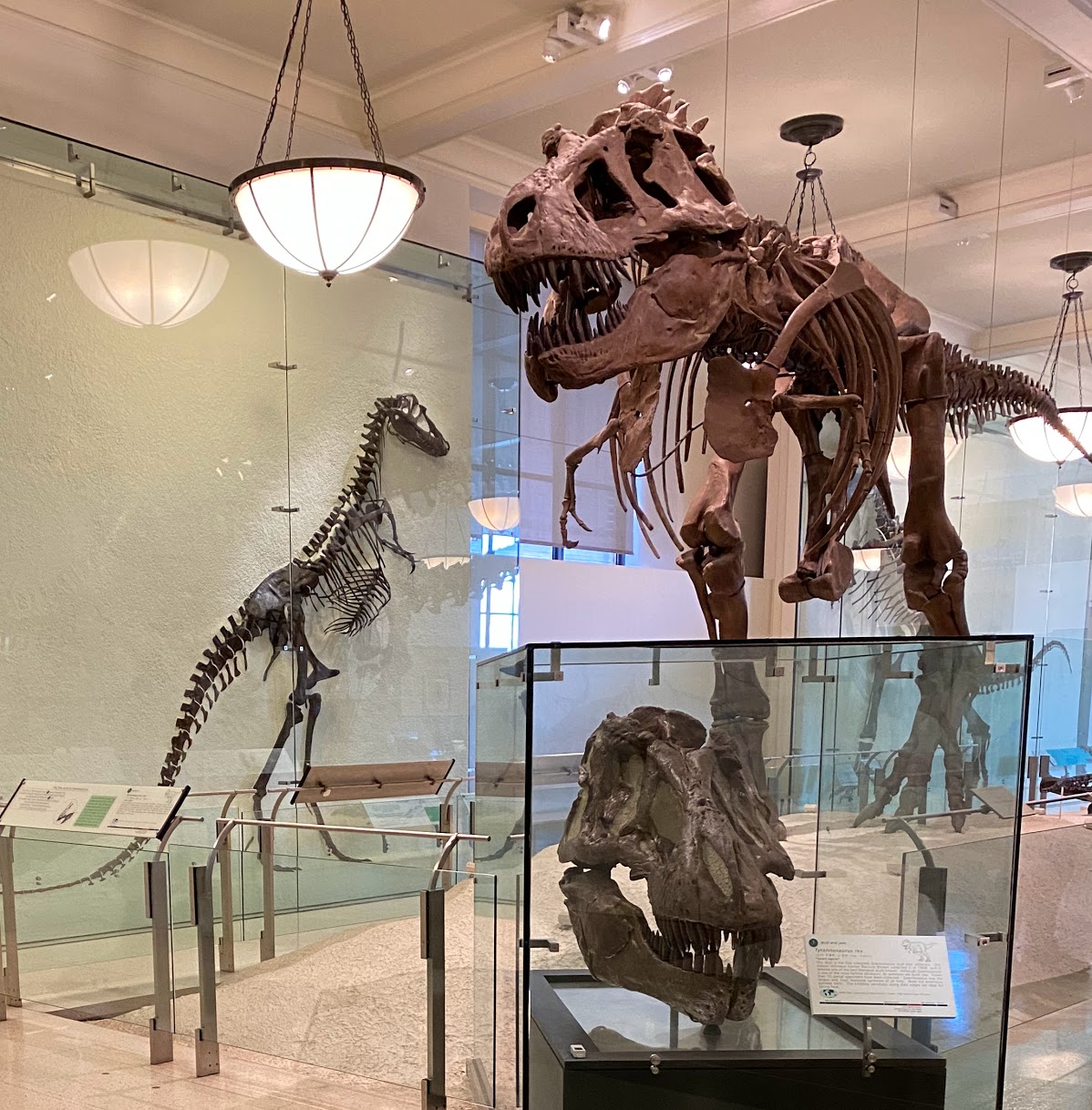
Skeletons in the American Museum of Natural History
In this blog post, our firm examined legal matters involving dinosaur fossils and skeletons, including purchases made by Nicolas Cage, Leonardo DiCaprio, and The Rock. Auction houses have faced growing interest in buyers seeking dinosaur bones. The sales have gotten a lot of attention, perhaps due to the trend of major celebrities making large, public bids for the pieces. As a result of the publicity, countries around the world from which fossils are illegally excavated have presented auction houses with ownership claims, based on their country’s property laws. Copyright law was also an issue for auction houses selling dinosaur skeletons this year because skeletons that are partly comprised of replica bones may come with intellectual property rights in the manufactured pieces.
Fashion Law and Protecting Brands
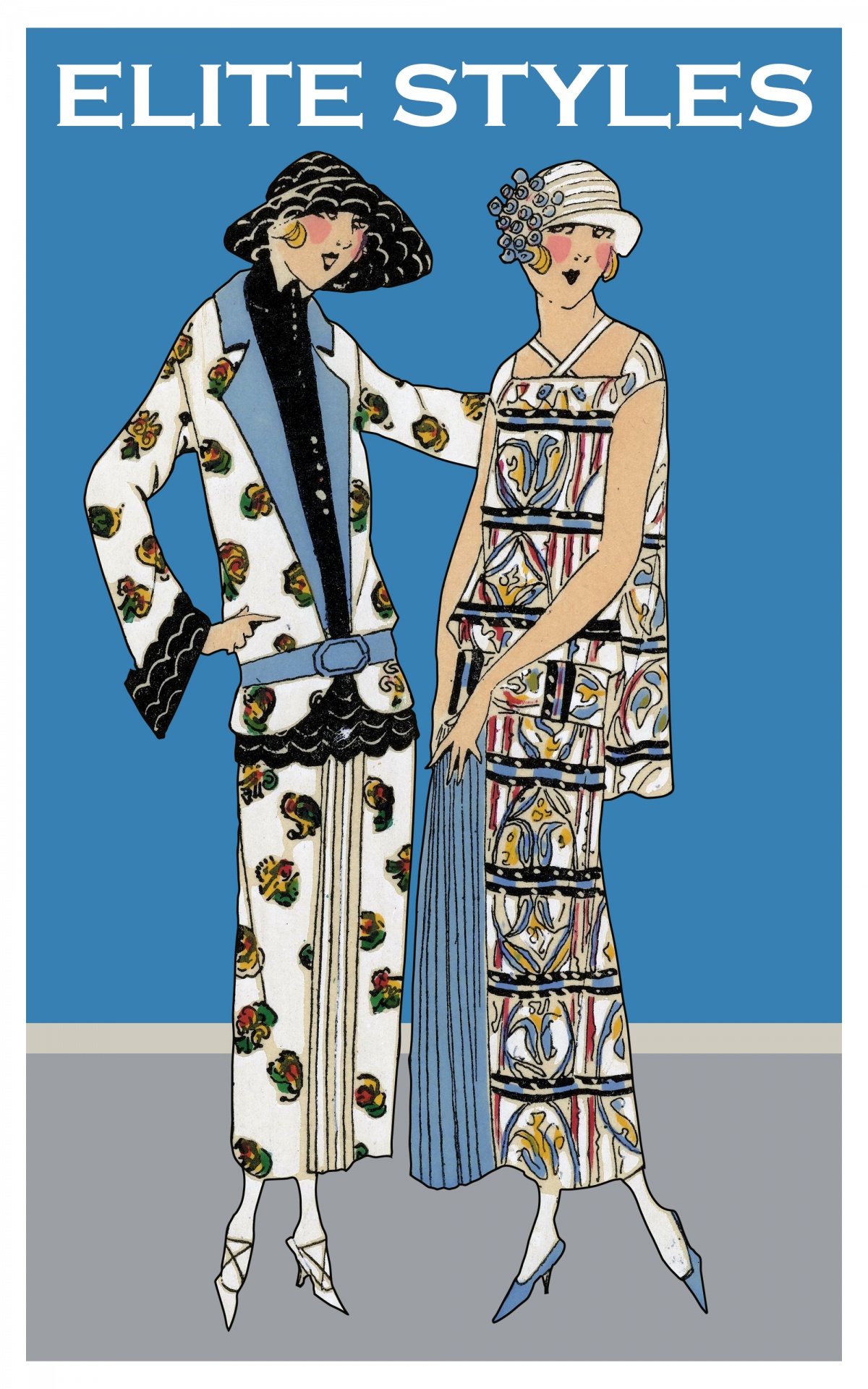 When does the law protect fashion brands? And what is the cost to other artists? Our firm answered these questions in this posts inspired by the Fall 2022 Fashion Weeks taking place around the world. Prominent fashion designers have been known to incorporate logos of other brands into their designs, often as a part of social commentary. Even where artistry is the intent behind the repurposed logo, these designers face financially devastating intellectual property claims from major the brands and companies who own the rights to the logo. Our firm considered how to balance protecting consumers from consumer confusion with giving designers the artistic liberty to create fashion that sparks social commentary. Read more on our website.
When does the law protect fashion brands? And what is the cost to other artists? Our firm answered these questions in this posts inspired by the Fall 2022 Fashion Weeks taking place around the world. Prominent fashion designers have been known to incorporate logos of other brands into their designs, often as a part of social commentary. Even where artistry is the intent behind the repurposed logo, these designers face financially devastating intellectual property claims from major the brands and companies who own the rights to the logo. Our firm considered how to balance protecting consumers from consumer confusion with giving designers the artistic liberty to create fashion that sparks social commentary. Read more on our website.
New York Raises Holocaust Awareness Through New Law

Gustav Klimt’s Woman in Gold
New York State now requires museums to post which artworks on display have links to the Holocaust. The New York bill, which was signed into law on August 10, 2022, accompanied two other Holocaust related bills aimed to combat rising reports of antisemitism. Our firm revisited the difficulty of proving provenance for items acquired during the Holocaust and shortly following WWII. The restitution of these works to families from which the pieces were stolen is incredibly healing.Unfortunately, such claims for the return of priceless works of art often have to overcome enormous legal hurdles, such as the difficulty of proving provenance in court and FSIA claims brought by countries who now claim possession. Read more on our website.
LAW FIRM UPDATES AND EVENTS
New Team Members
Our firm welcomed two new members to join our team, Yelena Ambartsumian and Maria Cannon. Yelena joins the firm as Counsel, while Maria joins us as an associate. We are proud to have Yelena and Maria as members of our team, and we wish them both a warm welcome.
Firm Founder Listed by Chambers
This year, firm founder Leila A. Amineddoleh was recognized by Chambers and Partners High Net Worth Guide for her work in Art and Cultural Property Law. The publication named Leila “a brilliant attorney,” and “a go-to for cultural property matters.” The publication also remarked on her passion for art law and her wealth of experience in the field. Read more here.
Art Law Conferences
Congratulations to our firm’s founder Leila A. Amineddoleh, who successfully chaired the 14th Annual NYCLA Art Law Institute, one of the most anticipated events of the year. Earlier in the year, in March, Leila presented the keynote speech at Yale University’s conference “Dura-Europos: Past, Present, and Future.” The conference focused on the systematic looting of Dura-Europos that took place during the Syrian civil war and during prior millennia. Leila presented on the history of cultural heritage looting and modern efforts to prevent such plunder. Read more about the conference here.
Leila was also a speaker at the Salmagundi Club, one of the oldest arts organizations in the U.S. Her other speaking engagements included moderating a panel for Art Appraisers’ Association Art Law Day and for Fordham’s Intellectual Property Law Journal’s 30th Annual Symposium, “Duplicate, Decolonize, Destroy: Current Topics in Art and Cultural Heritage Law.” In addition, she spoke at conferences hosted by Cardozo School of Law and Notre Dame School of Law. At Cardozo School of Law, Leila spoke on a panel at a symposium discussing cultural property ownership. Read more here. At Notre Dame’s Journal of International and Comparative Law Symposium, she served as panelist at the symposium, “International and Comparative Approaches to Culture”, and discussed antiquities disputes and repatriation of cultural heritage.
Associate Claudia Quinones presented on the “What’s New in Art Law?” panel at the 14th Annual NYCLA Art Law Institute. Her presentation covered title and ownership disputes, new technologies, and climate change activism in the art world. Details about the conference can be found here.
Yelena’s speaking engagements included Fordham Law School’s 30th Annual Intellectual Property Law Journal Symposium as a panelist on “Erased: Protecting Cultural Heritage in Times of Armed Conflict.” She also was a panelist at American University of Armenia’s Center for Truth and Justice Inaugural International Conference, “Cultural Heritage at Stake: How to Preserve, Mitigate Damage, and Punish Destruction.” Read more about the conference here.
IN THE PRESS
Leila appeared in the New York Times a number of times this year, in addition to Artnet, The Art Newspaper, the Observer, the Washington Post, USA Today, People Magazine, and Town + Country Magazine. She discussed a variety of topics, including the art market, cultural heritage disputes, Nazi-looted art, intellectual property disputes, and art collecting practices. Leila also appeared on WPIX-NY and in a number of podcasts.
CLIENTS AND REPRESENTATIVE MATTERS
Sculpture Garden Commission at the Smithsonian Institution
We are very proud to have served as legal counsel to famed artist Hiroshi Sugimoto for a number of his commissions, including his highly anticipated sculpture garden at the Hirshhorn Museum, part of the Smithsonian Institution.
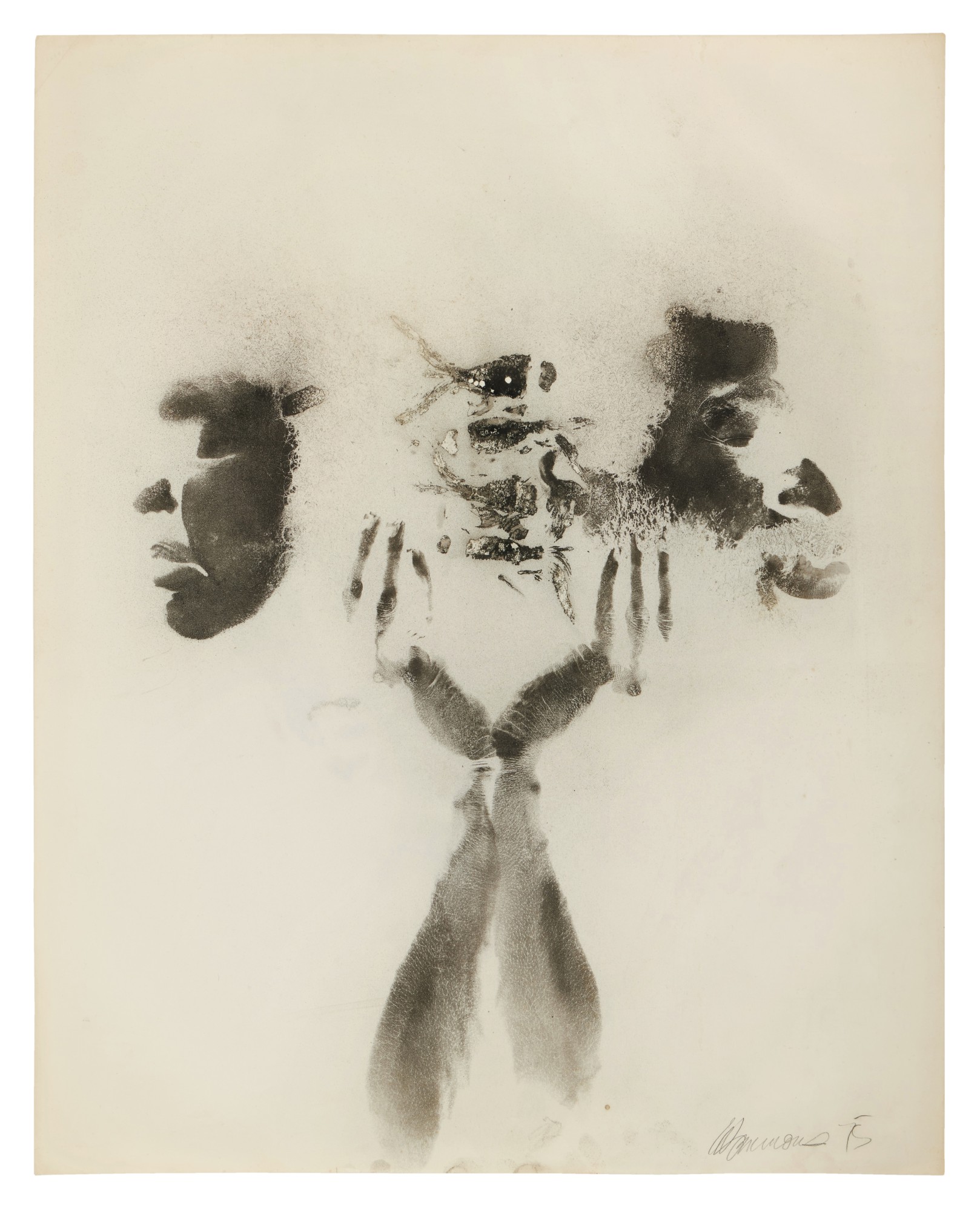 Auction Sales
Auction Sales
We worked with a number of clients to assist them with consigning art for sale at auction. One of our clients is the collecting family that consigned three works by David Hammons for the Sotheby’s Contemporary Evening Auction and one work at the Contemporary Curated sale earlier in the spring. Sotheby’s touted these works and their provenance, after the paintings remained with our clients for nearly five decades. All four of the works performed well, with two of them selling for above their high estimates.
Trademark Clients
We continue working with brands, artists, and companies by advising and serving as trademark prosecutors. Included among our clients are luxury watch brands, fragrance companies, and musicians, including multi-platinum songwriter and produced Jonas Jeberg.
Advising Art Market Players on New Platforms
While we often work with traditional art market participants (including artists, collectors, foundations, auction houses, museums, art advisors, and art experts), we are also happy to be at the forefront of the art and cultural world. As new art platforms and technologies develop, we are pleased to work with exciting online galleries, NFT platforms, novel art collecting exchanges, and artists exploring new media. We look forward to continue cutting edge work in the art sector.
On behalf of Amineddoleh & Associates, we wish you a happy and healthy holiday season and a wonderful and prosperous new year.
by Amineddoleh & Associates LLC | Sep 15, 2022 |
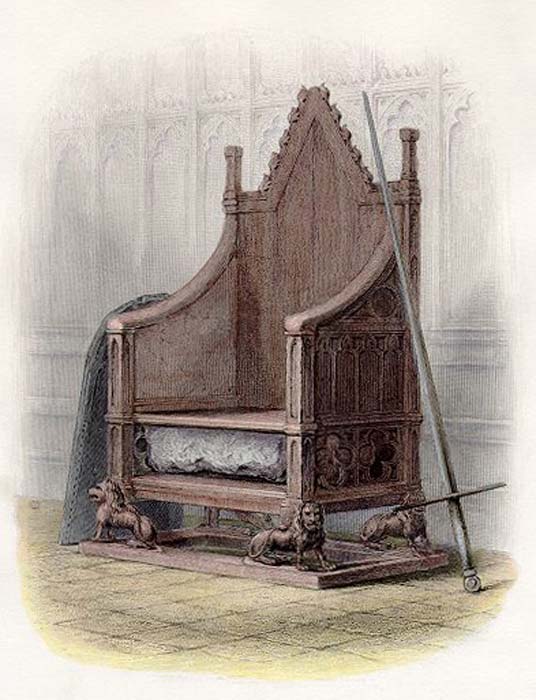
The Stone of Scone in Westminster Abbey
Last week’s passing of the cultural and political icon, Queen Elizabeth II, marks the end of an era, as well as the beginning of a new reign for her son, King Charles III. While the King’s coronation is a long way off (likely to take place in 2023), preparations for the events are already underway. Centuries-old traditions are being planned to punctuate the big day, including the assemblage of one of the globe’s most exclusive guest lists. And the most important guest on that list is an enormous slab of rock. Not to be confused with The Rock, the Stone of Scone is an ancient Scottish artifact. And it is what it sounds like – a large, grey stone – and its presence at the coronation is nearly as essential as His Majesty’s.

Edward Longshanks (portrayed in Braveheart). Copyright: 20th Century Fox Film Corp
Originally used as a throne by the ancient Scots to crown their rulers, the Stone was stolen by King Edward I during the Scottish Wars of Independence in the late 13th century. In stealing the Stone, King Edward sought to send a message to the Scots by establishing himself as their rightful monarch. Unbeknownst to Edward, the Scottish people did not intend for such pillaging to go unpunished, even if the retaliation did not take place until centuries in the future.
In 1950, four unlikely heroes – a motley group of students, led by ringleader Ian Hamilton – snatched the Stone from its place in the Chapel in Westminster Abbey. The quartet then literally carted the antiquity back to Scotland in not one – but two (more on that below) – Ford Anglias. The heist – though ultimately successful – did not occur without a hitch (hence, the two Fords). During the dislodging of the Stone from King Edward’s Chair in King Edward’s tomb, the Stone somehow slipped and smashed to the floor, breaking into two pieces. Not to be deterred, the foursome quickly bundled up the Stone in two packages. One piece was placed in Ford #1, which set off for home. The second piece was tucked into the trunk of Ford #2, driven by our ringleader, Hamilton.
Unfortunately for Hamilton, the night’s struggles were not quite complete, and as dawn broke over the horizon, a policeman approached the car, curious as to why two students were quickly and nervously dashing away from the Abbey at 5am. Hamilton and his fellow passenger jumped into a feigned lover’s embrace, and, after swapping a few innuendos with the policeman, were sent happily on their way.
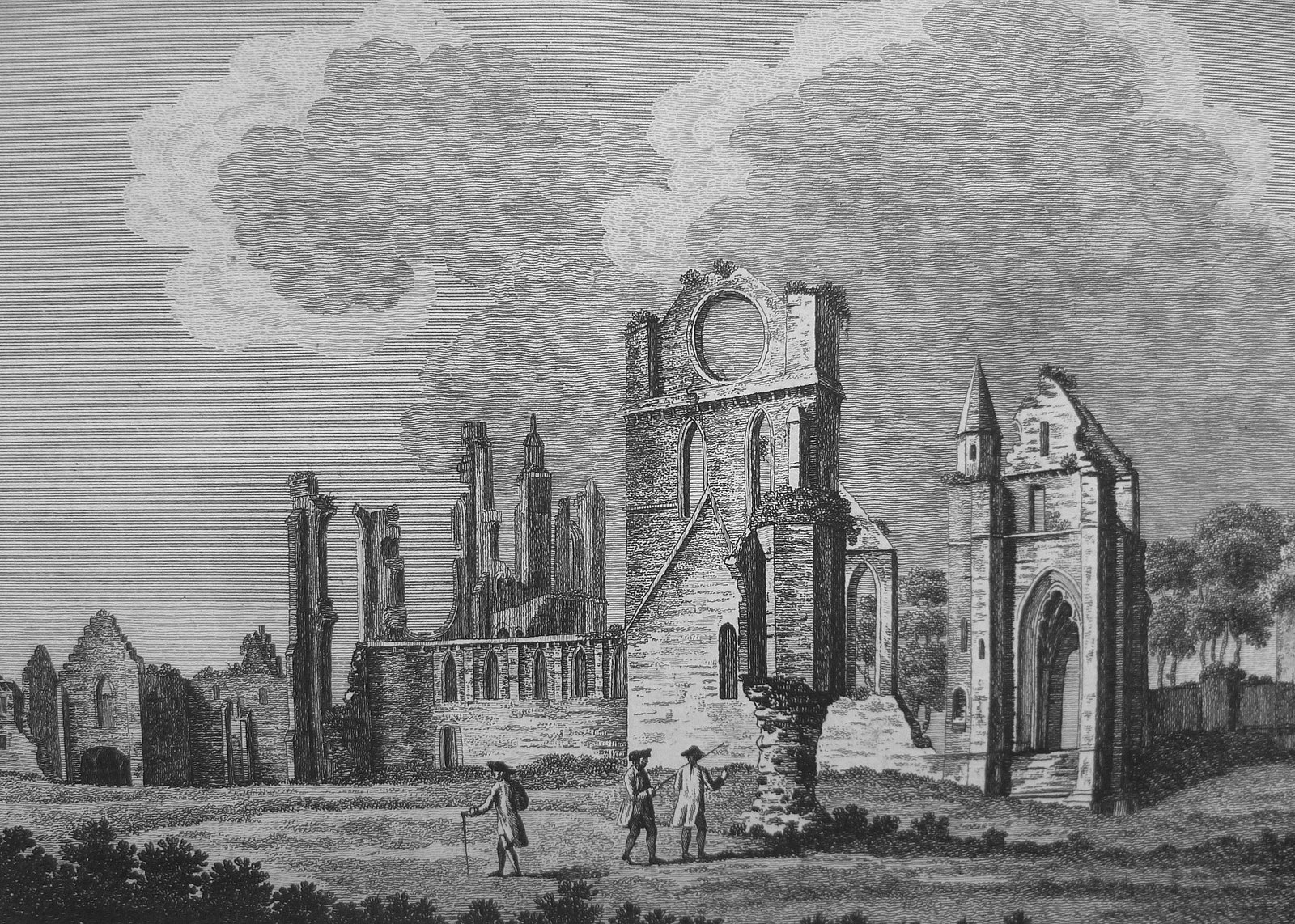 This resolved the exit part of the theft, yet left unresolved the issue with the Stone being smashed into two pieces. Upon arrival in Scotland, the Stone received some TLC and a professional mending by a stonemason, who, in addition to doing fantastic masonry, was also phenomenal at keeping secrets. The mason fixed the Stone and breathed not a word to the authorities. But several months later, police received a call about the whereabouts of the Stone: it had been deposited in the Arbroath Abbey in Scotland. This is where the Stone remained until 1952, when it was returned to Westminster Abbey in England.
This resolved the exit part of the theft, yet left unresolved the issue with the Stone being smashed into two pieces. Upon arrival in Scotland, the Stone received some TLC and a professional mending by a stonemason, who, in addition to doing fantastic masonry, was also phenomenal at keeping secrets. The mason fixed the Stone and breathed not a word to the authorities. But several months later, police received a call about the whereabouts of the Stone: it had been deposited in the Arbroath Abbey in Scotland. This is where the Stone remained until 1952, when it was returned to Westminster Abbey in England.
And what about our “bravehearted” student thieves? They were eventually questioned by the authorities, leading Hamilton to confess the entire episode. However, none of the students faced prosecution for their theft, due to the incredible political implications of the heist and the ensuing renewed vigor for Scottish nationalism and devolution efforts.
The 1950 theft became both infamous and synonymous with a separate and distinct Scottish identity, as essentially a testament in itself to the history of independent Scottish reign. In fact, the theft became so closely associated with Scottish independence that England’s return of the Stone to Scotland in 1996 is believed to have been a catalyst for the vote for Scottish devolution in 1997.
Today, the Stone remains in Scotland and travels to England only for the coronation of a new British monarch. As the Stone comes back into the global zeitgeist due to the preparations for England’s crowning of a new King, the Stone’s cultural, political, and historical significance cannot be overlooked. The Stone – and its rare journey between the two Abbeys – encompasses the history of the Scottish monarchy, the legitimacy of British rule, the enduring spirit of Scottish cultural identity, and the undercurrent of thievery and war.
Our thoughts are with the Royal Family and all citizens of the United Kingdom during this time of mourning.
by Amineddoleh & Associates LLC | Aug 16, 2021 |
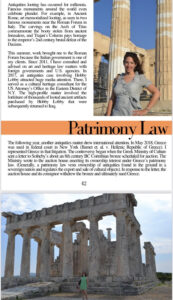 Our founder has been featured in the Art She Says summer 2021 French Riviera Issue. Her contribution to the magazine discusses art theft, forgeries, government ownership of cultural heritage, World War II restitution matters, and artists’ rights, with a particular focus on the firm’s work and her experience as an art lawyer. This includes our firm’s recent representation of the Italian and GreekMinistries of Culture in federal court. These were landmark cases, sending the message that foreign sovereigns can continue to monitor the art market without fearing lawsuits when making inquiries as to potentially looted antiquities’ whereabouts. The article also touches on the forfeiture of antiquities from Hobby Lobby, since Leila served as a cultural heritage consultant for the U.S. Attorney’s Office in that matter, and another forfeiture case concerning a 13th century painting.
Our founder has been featured in the Art She Says summer 2021 French Riviera Issue. Her contribution to the magazine discusses art theft, forgeries, government ownership of cultural heritage, World War II restitution matters, and artists’ rights, with a particular focus on the firm’s work and her experience as an art lawyer. This includes our firm’s recent representation of the Italian and GreekMinistries of Culture in federal court. These were landmark cases, sending the message that foreign sovereigns can continue to monitor the art market without fearing lawsuits when making inquiries as to potentially looted antiquities’ whereabouts. The article also touches on the forfeiture of antiquities from Hobby Lobby, since Leila served as a cultural heritage consultant for the U.S. Attorney’s Office in that matter, and another forfeiture case concerning a 13th century painting.
Leila’s contribution concludes with an overview of due diligence and intellectual property rights, which are crucial for private collectors, particularly with the vast number of forgeries and stolen works on the market. The magazine also includes photographs taken by Leila. We invite you to visit the Art She Says website and read the issue to discover more about Leila’s contribution, as well as the other interesting and valuable articles in the publication. Art She Says is the leading digital magazine that empowers women in the art world through the curation of luxury content, networking events, and art advisory services.
An online copy of the article is available HERE.



 When does the law protect fashion brands? And what is the cost to other artists? Our firm answered these questions in this posts inspired by the Fall 2022 Fashion Weeks taking place around the world. Prominent fashion designers have been known to incorporate logos of other brands into their designs, often as a part of social commentary. Even where artistry is the intent behind the repurposed logo, these designers face financially devastating intellectual property claims from major the brands and companies who own the rights to the logo. Our firm considered how to balance protecting consumers from consumer confusion with giving designers the artistic liberty to create fashion that sparks social commentary. Read more on our
When does the law protect fashion brands? And what is the cost to other artists? Our firm answered these questions in this posts inspired by the Fall 2022 Fashion Weeks taking place around the world. Prominent fashion designers have been known to incorporate logos of other brands into their designs, often as a part of social commentary. Even where artistry is the intent behind the repurposed logo, these designers face financially devastating intellectual property claims from major the brands and companies who own the rights to the logo. Our firm considered how to balance protecting consumers from consumer confusion with giving designers the artistic liberty to create fashion that sparks social commentary. Read more on our 

 Auction Sales
Auction Sales

 This resolved the exit part of the theft, yet left unresolved the issue with the Stone being smashed into two pieces. Upon arrival in Scotland, the Stone received some TLC and a professional mending by a stonemason, who, in addition to doing fantastic masonry, was also phenomenal at keeping secrets. The mason fixed the Stone and breathed not a word to the authorities. But several months later, police received a call about the whereabouts of the Stone: it had been deposited in the
This resolved the exit part of the theft, yet left unresolved the issue with the Stone being smashed into two pieces. Upon arrival in Scotland, the Stone received some TLC and a professional mending by a stonemason, who, in addition to doing fantastic masonry, was also phenomenal at keeping secrets. The mason fixed the Stone and breathed not a word to the authorities. But several months later, police received a call about the whereabouts of the Stone: it had been deposited in the  Our founder has been featured in the
Our founder has been featured in the